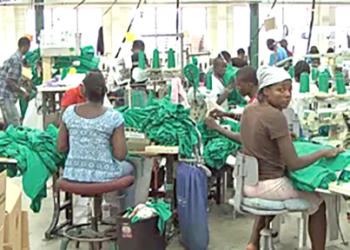Once upon a time, in the vibrant land of Nigeria, a nation rich in resources and diversity, a delicate dance between politics and monetary policy unfolded. This dance, known as the “Political Risk and Monetary Policy Trilemma,” has been a relentless challenge for Nigeria’s policymakers, testing their wisdom and dexterity in navigating the intricate steps that could dictate the country’s economic fate.In this complex dance, three actors took the stage: the Nigerian government, the central bank, and the nation’s people. Each had their unique desires and ambitions, often conflicting, but essential to maintain the nation’s prosperity.The Nigerian government, ever aspiring to appease its citizens and secure political power, yearned for economic growth and stability. They were eager to announce bold initiatives, promising increased social spending, infrastructural development, and ambitious welfare schemes. However, these promises came at a cost. To fund these grand visions, the government relied heavily on borrowing and printing more money. Alas, like a dancer entangled in a web of debt and inflation, the government’s actions had serious consequences.As the government danced its financial waltz, the central bank, the country’s monetary conductor, sought to maintain price stability and preserve the value of the Nigerian currency. With vigilant eyes on inflation, the central bank raised interest rates and tightened monetary policies to control the surge in money supply. Yet, these actions slowed down the growth engine and stifled investments in the economy. The people, in turn, were caught in the crossfire of this intricate choreography, facing the brunt of rising prices and decreased access to credit.Like spectators watching a captivating ballet, economists and experts observed the Nigerian trilemma unfold. The country’s policymakers were bound by three interconnected goals, yet could not achieve all simultaneously: exchange rate stability, capital mobility, and monetary independence. Alas, they were trapped in a dance where compromising one goal to pursue the other seemed inevitable.The exchange rate stability was crucial to Nigeria’s import-dependent economy, but maintaining it required constant intervention by the central bank. This intervention led to a rapid depletion of foreign reserves and limited the central bank’s ability to maneuver monetary policies effectively.
As foreign investors grew wary of the volatile exchange rates, capital mobility suffered, affecting foreign direct investment and economic growth.The government, desperate to maintain the illusion of prosperity, leaned heavily on the central bank’s dwindling reserves, further exacerbating the monetary policy trilemma. The country became increasingly vulnerable to external shocks, and the Nigerian Naira danced wildly, reacting to every twist and turn in global financial markets.As the nation’s debt burden increased, the dance became even more treacherous. Investors grew wary of lending to Nigeria, and the risk of default loomed like a dark cloud over the stage.
The central bank, in its efforts to mitigate the risk, tightened monetary policies further, squeezing the life out of the economy. The once promising rhythm of growth slowed to a sluggish pace, leaving the people disillusioned and disheartened.In this turbulent dance, the Nigerian people bore the brunt of the decisions made by their policymakers. Rising inflation eroded their purchasing power, pushing millions into poverty. Unemployment soared, and aspirations were crushed under the weight of the economic downturn.
The beautiful harmony that could have united the nation was replaced by a cacophony of grievances and unrest.Yet, amid the turmoil, there was hope. Enlightened economists and policymakers realized that breaking free from the trilemma required a coordinated effort.
The Nigerian government needed to adopt a more sustainable fiscal policy, reducing its reliance on debt and finding innovative ways to fund its initiatives without causing excessive money supply growth.Simultaneously, the central bank needed to foster a more flexible exchange rate system, allowing market forces to determine the value of the Naira. This approach would enhance capital mobility and attract much-needed foreign investments, stimulating economic growth.
The people, too, had a role to play in this grand performance. They needed to engage in constructive dialogue with their policymakers, demanding transparency and accountability.
By actively participating in the nation’s economic decision-making process, they could help shape policies that worked in their best interests.As the curtains slowly draw to a close on this chapter of Nigeria’s dance with the Political Risk and Monetary Policy Trilemma, a glimmer of optimism emerges. It is a reminder that even in the face of adversity, solutions can be found. Nigeria has the potential to break free from the trilemma’s grip and forge a new path towards sustainable growth and prosperity.As the next act unfolds, let us hope that the Nigerian government and central bank can find the delicate balance necessary to transform this dance into a symphony of economic resilience and social progress.
Let us aspire to witness a Nigeria where the people are no longer mere spectators but active participants, working hand in hand with their policymakers to build a brighter future for all.In this grand ballet, the destiny of Nigeria hangs in the balance, waiting for its actors to seize the moment and turn the trilemma’s challenge into an opportunity for greatness.




